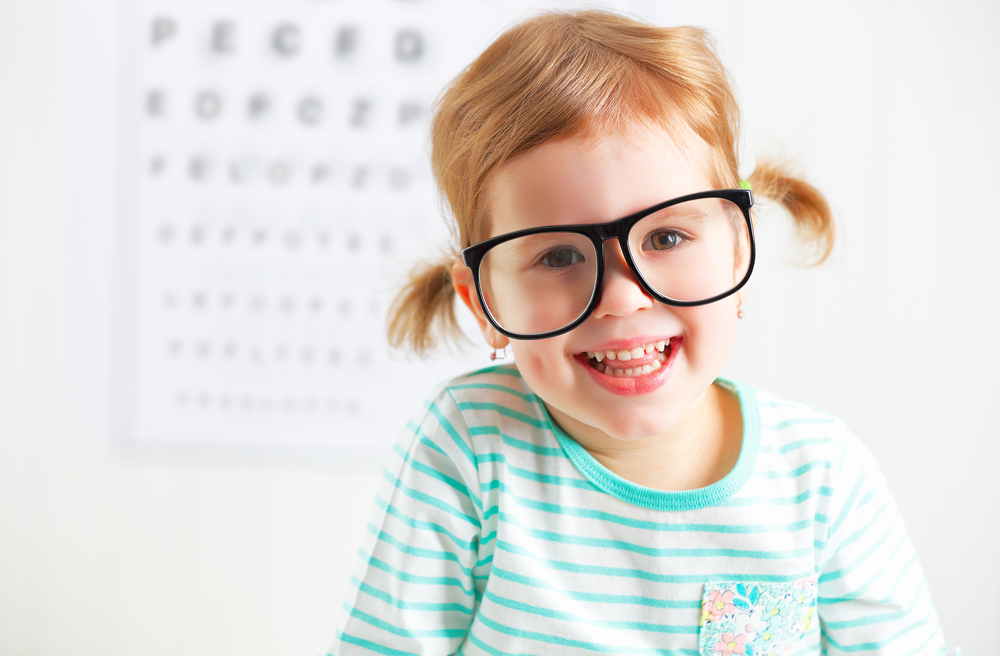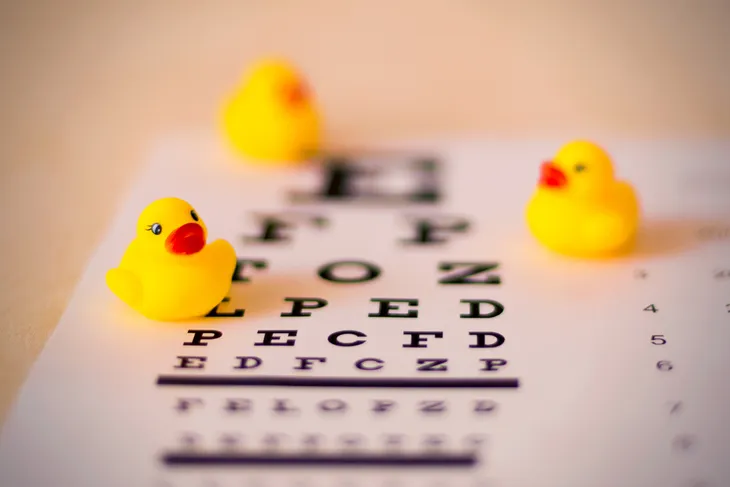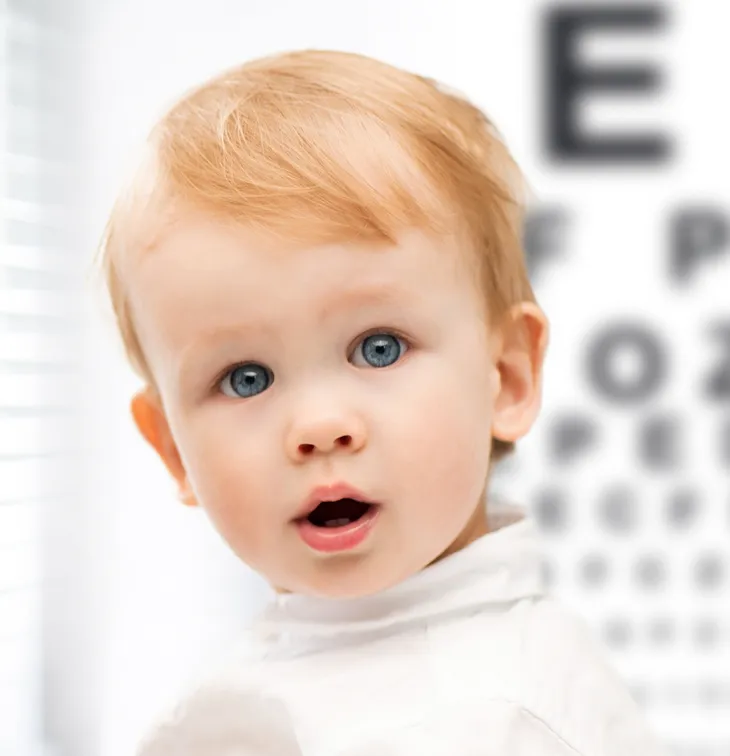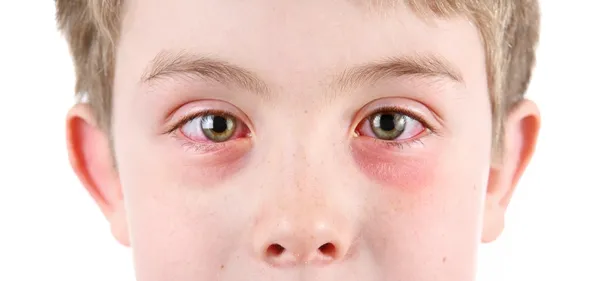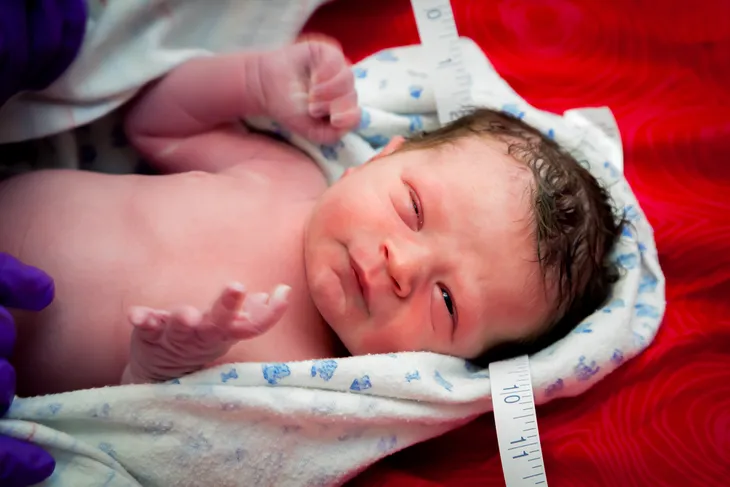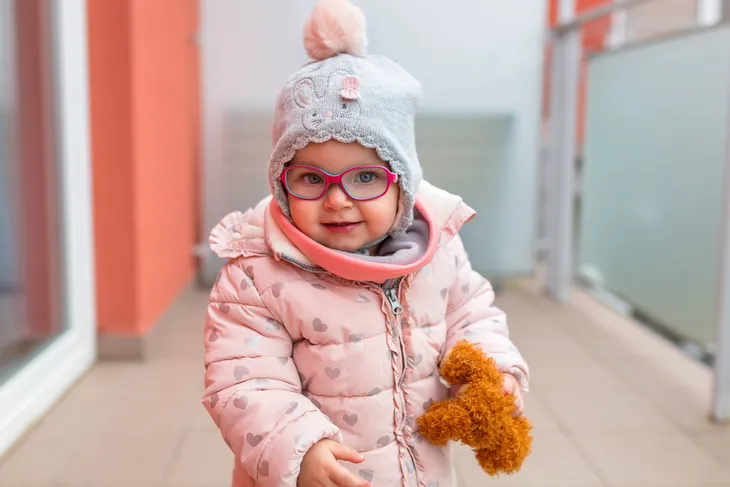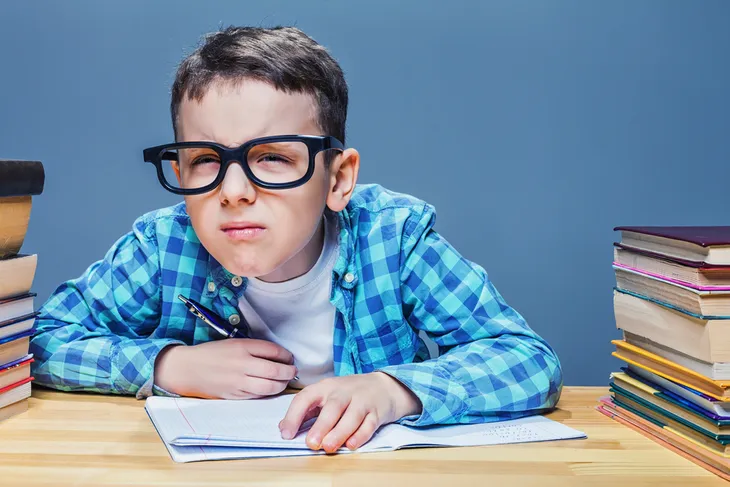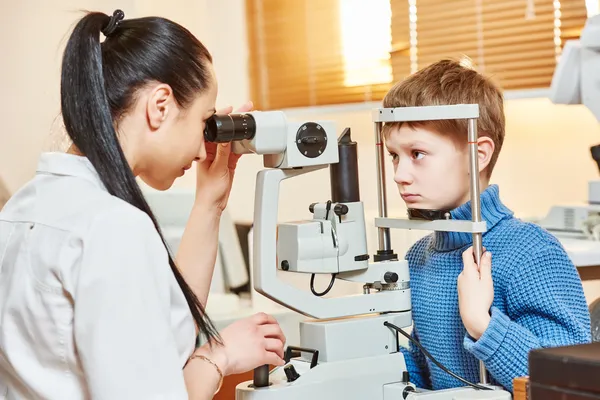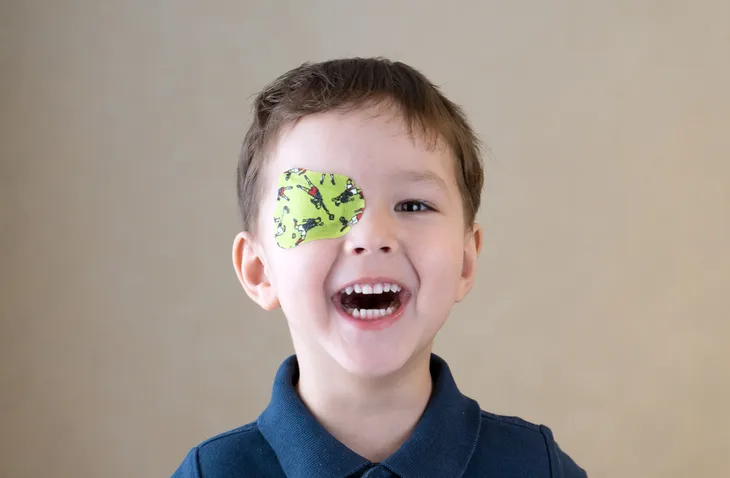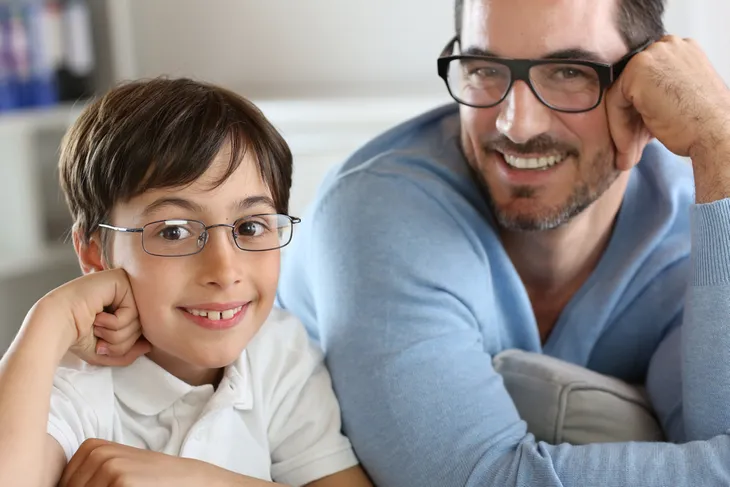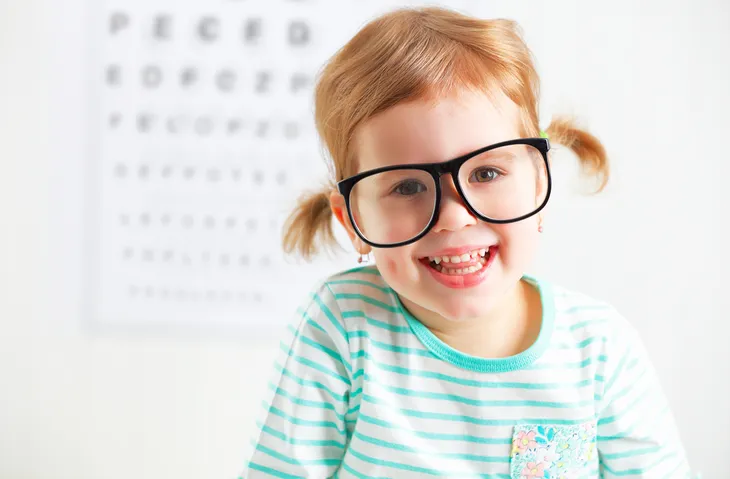We tend to worry more about eye problems and deteriorating vision as we age, but the truth is that children can have a variety of eye ailments that can threaten their eyesight as well.
Even if your child has 20/20 vision and doesn’t seem to have trouble seeing the blackboard (or whiteboard) in school, you should still take them for regular visits to an optometrist to be on the safe side, because their vision is precious. Here are 12 things to know about kids’ eye health…
1. Child Eye Problems are Common
WebMD warns that 1 of out 4-children has vision difficulties, although parents may not be aware of them. You may notice your child squinting occasionally and pass it off as a temporary habit, rather than your child trying to focus on something in the distance, it adds.
This squinting can be a sign of a common condition called myopia, or nearsightedness. It can be easily remedied with corrective lenses, but in the meantime your child may be having trouble seeing important information in school or otherwise.
2. Preparing For an Early Eye Exam
WebMD talks about eye exams for children that are 1-year or even younger, noting a doctor will check for nearsightedness, farsightedness (when they can see far away but struggle with objects close to them), astigmatism (misshaped eye causing focusing problems), and amblyopia (1-eye stronger than the other). The doctor will also look at how your child’s eyes move, their alignment, and how they react to changes in light, adds the source.
For older kids (ages 3-to 5), there will be a physical exam of the eyes as well as vision screening tests including eye charts, pictures, or letters, adds WebMD. There’s also another test called the “tumbling E game” to test for visual acuity, used if the child cannot yet read.
3. Book an Exam Before Your Child Can Read
As we noted, you don’t have to wait until your child can read before they have a proper eye exam, confirms 20-20eyecare.ca. “Doctors of Optometry have special equipment that allow us to check the visual ability of a child without requiring any feedback from the child at all,” notes the source.
The Canadian site explains that your child should see an eye doctor for an exam by age 3, but as early as 6-months. “In fact, children, even infants or toddlers, can and should have eye exams on a regular basis,” it adds.
4. Most Common Eye Problems in Kids
The American Academy of Ophthalmology has an article about childhood eye conditions and diseases, and stresses the important of vision screening to get an early diagnosis and treatment. Focus/alignment issues in children include amblyopia, when 1-eye lags in acuity; ptosis, a drooping eyelid that can impede the field of vision; and “cloudy eyes,” which may be associated with a cataract or other disorder.
Meanwhile, common eye diseases and conditions include conjunctivitis (pink eye), which is not normally serious but it highly contagious; a chalazion, a small lump on the eyelid caused by gland is plugged; a stye, a sore from an infected eyelash follicle; or a blocked tear duct, which presents as eyes that are often watery, it adds. Of course, refractive eye problems (needing glasses) are also common amongst young people.
5. More Serious Problems to Keep an Eye Out For
KidsHealth.com explains there can be other eye problems that affect kids that need more immediate medical attention. These include retinoblastoma, a cancerous tumor that appears in the first 3-years and can cause vision loss or whiteness in 1-or both eyes, and infantile cataracts, which can cloud the lens of an eye in a newborn.
Other serious conditions that need attention include congenital glaucoma, which is rare and “is the result of high pressure in the eye from incorrect or incomplete development of the eye drainage canals before birth,” notes the source. Surgery and medication can help this problem, it adds.
6. Peering Through the Looking Glass
If the eye doctor says it’s time for glasses for your kids, then plastic framed spectacles with “shatter-proof polycarbonate lenses” are best for kids who are active, suggests WebMD.
There can be a bit of a stigma involved with kids and glasses, as they might fear getting teased or hearing negative comments about eyewear. Let them be part of the process in picking out the frames to help them feel more involved, adds the source. “Make the process fun,” it notes. Contact lenses may also be an option for your child – speak to your eye doctor.
7. Signs of an Eye Problem
How do you know your child is struggling to see properly if they can’t communicate it to you verbally? You may have to rely on visual cues, notes KidsHealth.com. Aside from frequent eye rubbing, you may notice your child has trouble tracking an object (try your finger as a test), or abnormal alignment or movement of the eyes after 6-months of age.
Your child may also have a problem that needs attention from a doctor if they have constantly red eyes, chronic tears from their eyes, or a white pupil instead of a black one, it adds. Kids that can read but can’t recite words from the board in the classroom is another telltale sign, or they may sit close to the television to properly see their favorite show (which, by the way, will not damage their vision in itself contrary to popular belief).
8. Early Care is Important
HealthLink.ca explains that recognizing and taking care of child’s vision problems before the age of 4 is important, as their vision stops developing around the age of 8-years. “After that age, eyesight development is complete and it cannot be corrected easily,” it adds.
The source explains that while babies can see at birth, “They have to learn how to focus, track objects, and use both eyes together.” By 1-year, they have “adult-like” vision, and have developed the hand-eye coordination needed for grasping objects. A preschool-aged child will further develop eyesight skills required for finer motor skills and to recognize colors, numbers, and shapes, it adds.
9. Don’t Put Off Treatment
The same source warns not to wait if your child has been diagnosed with certain eye problems, as it will only make the problem worse as they age. For example, strabismus (crossed eyes) and amblyopia (lazy eye) “can result in permanent vision damage if they are not corrected early,” it adds.
This adds to the important of having your child’s eyes tested at an early age, because certain eye problems are hard to detect and need a doctor to diagnose them, it adds. See a doctor if your child is having frequent headaches, or if you notice any of the telltale signs of eye trouble we mentioned earlier.
10. Eye Problems and Genetics
VSP.com says if your parents have eye problems, there’s a chance they’ve passed them along to you. But it’s not always the case, it adds. “Others tend to be influenced by environmental or other factors,” it explains.
Eye conditions such as nearsightedness or farsightedness that require corrective lenses “have a strong genetic component,” but there are other risk factors as well, it adds. For example, the source says some studies suggest students who have their noses buries in books often may develop nearsightedness earlier than others. Other eye problems that may or may not have genetic links include glaucoma, age-related macular degeneration, amblyopia, or strabismus (being cross-eyed).
11. Children are Not Too Young For Contacts
Your child may not be too crazy about the prospect of wearing glasses at an early age, for fear they may get ridiculed (or from discomfort). Another valid reason is needing contacts to play sports. However, VSP.com says kids as young as 8-years can be fitted with contact lenses, but as a parent you should be aware there’s more maintenance involved.
“To prevent dangerous eye infections, your daughter will need to regularly clean her contact lenses and case. If she already practices good hygiene habits and is generally responsible, she’s on the right path,” it offers. Getting a proper contact lens fitting with an eye care professional is an important step, it adds.
12. Preventing Eye Damage in Kids
If your child has strong vision and good genetics when it comes to eye health, a number of environmental factors can still take their eyesight down a notch if you don’t take precautions – including booking them in for regular eye exams.
WebMD says providing age-appropriate toys without sharp edges is important, as well as giving them toys and games that can aid in visual development. You should also adequately protect their eyes from sun damage with UV coated lenses (sunglasses), “especially if your child’s eyes are light in color,” it adds. You should also provide your child with eye-friendly food with Vitamin C, E, zinc, Omega-3 fatty acids, and lutein (mainly found in leafy greens), says WebMD.
